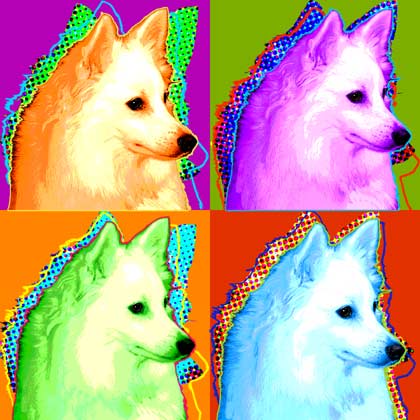


American Eskimo Dog
The American Eskimo Dog is a breed of companion dog originating in the United States of America (probably in New York City) in the twentieth century. The breed was formerly called a German Spitz or an "American Eskimo Spitz". It is a member of the Spitz family of dogs. It achieved a high degree of popularity in the 1930s and 1940s in the U.S. as a circus performer. The American Kennel Club recognized the breed in 1994 and set the current standard for the breed. The United Kennel Club had recognized the breed long before 1994, and there is no difference between the two breed standards.
Appearance
The standard for the American Eskimo Dog calls for them to be white, with brown eyes (blue eyes, such as those found on the Siberian Husky, are a disqualification and a sign of poor health or breeding), and a compact body. The dog's length should be only slightly greater than its height at the shoulder. The muzzle is long and lupine (in contrast to the muzzles of Pomeranians). The ears are held erect and alert, and the tail should be feathered and curled on the dog's back. These dogs look very much like smaller versions of the Samoyed, to which they are related, and come in three standard sizes. The toy is from 9 to 12 inches (23 to 30 cm) at the withers; the miniature is from 12 to 15 inches (33 to 38 cm); the standard is from fifteen inches up to and including nineteen inches (39 to 48 cm).
History
The American Eskimo Dog, or "Eskie" as it is often called, is derived from the German Spitz, the Finnish Spitz, and almost certainly the Samoyed, Pomeranian and Keeshond. The Spitz family of Nordic dogs is one of the least altered by human husbandry and reflects most nearly the prototypical dog, from which stock all others have been derived. Archeology suggests that Neolithic dogs living with humans would today pass for spitzes.







1 comment:
Hey was just rolling thru wanted to let ya know ya got a cool blog here Nice Job.
Post a Comment